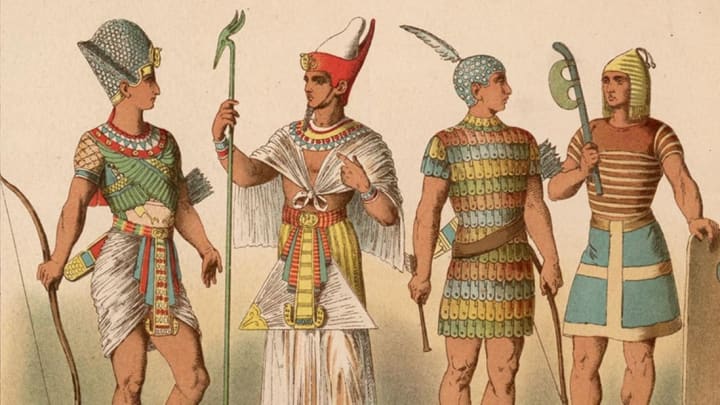These days when one of the world’s monarchs celebrates a jubilee, the most that tends to happen is a street party or a celebratory concert. But back in Ancient Egypt, things weren’t quite so simple. After a pharaoh had ruled for 30 years, the Egyptians observed a strange ritual called Heb-Sed—which culminated in the pharaoh running around a race track in the courtyard of their palace, wearing a kilt with an animal’s tail attached to it. And woe betide anyone who didn’t complete the course.
Heb-Sed or the Sed jubilee was one of the oldest and longest-running rituals in Egyptian history, dating back more than 5000 years and known to have endured all the way through to the Roman conquest of Egypt in the 1st century BCE. Although accounts of it are sketchy, it’s thought that Heb-Sed usually took place in the fourth month of the Egyptian calendar, Koiak (so that it coincided with the flooding of the Nile around November) and tended to involve the pharaoh making various offerings to the gods and then being “re-crowned” in a lavish coronation ceremony representing the renewal of their rule.
The exact date and organization of Heb-Sed was often left up to the pharaoh, so not every festival was the same. In some cases, the pharaoh was taken from one temple to another where each of the various stages of the ritual would take place, while others opted to have an entirely new temple built especially for the event. Likewise, the pharaoh’s “re-crowning” was sometimes performed once, and sometimes twice and at different locations and with different crowns, representing the union of Upper and Lower Egypt. And on some occasions the ceremony even concluded with the pharaoh being given a ceremonial bow and arrow and being made to shoot towards the four corners of the kingdom, to show just how far-reaching their power was.
Although the content of the festival might not have been fixed, the meaning behind Heb-Sed remained the same: After a pharaoh had ruled for a significant length of time, the ritual was a means of reinvigorating and renewing their power and strength (and for that reason, it took its name from an Egyptian jackal god believed to be related to the god of power and war). Usually that happened after a pharaoh had ruled for 30 years, a period representing a single generation, but some Heb-Seds took place sooner either at the pharaoh’s request or when doubts were raised over their health or strength.
Either way, once a pharaoh had celebrated their first Heb-Sed they were expected to repeat the process every three years after until their death—which means that Pepi II might have marked the occasion no less than 20 times, if records of his 90-year reign are to be believed.
But besides giving the pharaoh the chance to publicly renew their power, Heb-Sed also gave the people of Egypt a chance to see just how fit and strong (and therefore capable of ruling the kingdom) their pharaoh actually was. And to do that, at the center of each Heb-Sed festival was a very odd event indeed.
Dressed in a short kilt, with the tail of a bull or some similar creature attached to the back of it, the pharaoh would be led out to a specially constructed running track in the grounds of one of their palaces or temples and, in front of an audience of dignitaries, would be made to run as quickly as possible around the track.
Besides simply giving the pharaoh a chance to demonstrate their vigor and athleticism, Egyptologists are unclear precisely what the point of the pharaoh’s bizarre footrace actually was. Some have suggested that it was purely ceremonial, and represented the pharaoh “out-running” old age. Others claim that it was intended, like the bow and arrow, to represent the pharaoh reaching out to all parts of their kingdom. Still others have claimed that there was a much more practical reason for it—if the pharaoh wasn’t able to complete the course then they were no longer fit to rule and would be promptly sacrificed, to make way for their younger, fitter successor.
Whatever the meaning behind Heb-Sed might have been, there’s no doubt at all that it actually took place. Numerous images of the kings and queens of Egypt running their Heb-Sed course have been found over the decades, as have the running tracks themselves—the great step-pyramid of Djoser in Saqqara, Egypt, has an entire courtyard dedicated to the king’s Heb-Sed.
Luckily for Elizabeth II—who turns 90 at the end of this month—this is one tradition that hasn’t stood the test of time.
